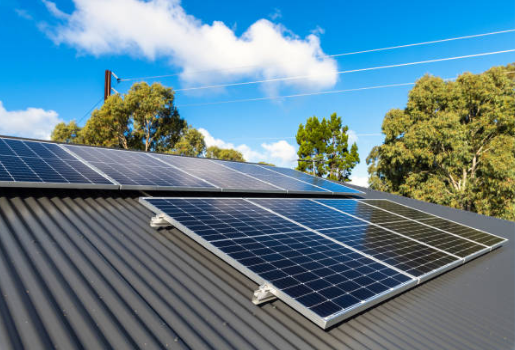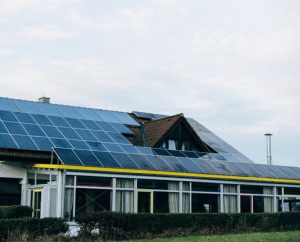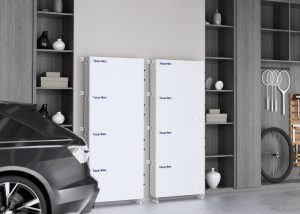What is a grid-tied solar system?
So you’re thinking about moving to solar. But solar systems come in all shapes and sizes, with varying complexities, capacities, and capabilities. When choosing a system, one of the major decisions you’ll need to make relates to whether you want a grid-tied, off-grid, or hybrid solar system.
These three types of solar systems all offer different levels of flexibility and energy independence, but which one works best for you depends on several factors.
In this article, we take a closer look at the most popular type of solar system — the grid-tied solar system. We’ll look at how grid-tied solar systems differ from off-grid and hybrid systems, along with some of the key benefits to help you know which type is best for your home or business.
Contents
- What is a grid-tied solar system?
- How does a grid-tied system work?
- What makes them different to other solar systems?
- Advantages of a grid-tied solar system
- Equipment required for a grid-tied system
- How much does a grid-tied solar system typically cost?
What is a grid-tied solar system?
A grid-tied solar system is, as the name suggests, a solar energy system that is connected to the main electricity grid. They can operate without being connected to a solar battery, making them the most simple, cost-effective, and popular type of solar system.
How does a grid-tied system work?
Grid-tied solar systems are the simplest type of solar system, with different equipment and layout required compared with off-grid and hybrid solar systems. The basic premise of a grid-tied system is to connect a building to both the main electricity grid and a solar array, so power from either or both can be used.
As there is no energy storage equipment in a grid-tied system, any power generated by the solar panels that is not used immediately is automatically fed into the main grid. When energy generation from the panels is insufficient to match energy usage, the system automatically draws power from the main grid to make up the shortfall.
What makes them different to other solar systems?
The main types of solar systems to choose from are grid-tied, off-grid, and hybrid. A grid-tied system is, as we’ve covered above, linked to both the solar panels and the main grid. This means that you can draw power from either the panels or the grid, and also automatically feed excess solar power into the grid. As such, different equipment is used to that used in off-grid systems.
Off-grid systems differ in that they are not linked to the main electricity grid. Instead, they operate as a closed system, making them ideal for areas that do not have grid access. To ensure reliable access to power, off-grid systems will generally also include a battery system and a backup generator.
Hybrid solar systems combine some of the elements of the other two systems, making them an attractive option for those looking for flexibility. Hybrid systems include solar panels, batteries, and a grid connection, as well as a generator in some cases. This means users can dynamically switch between energy sources depending on price, energy production, and energy usage.

Advantages of a grid-tied solar system
Grid-tied solar systems have several key advantages that contribute to them being the most popular type of solar setup. These advantages include:
Cost-effective installation
As the simplest type of solar setup, grid-tied solar systems require less equipment, mainly due to the fact that they are the only type of solar system that doesn’t require a battery. This makes them more straightforward to install than other options, such as off-grid or hybrid systems. This simplicity generally translates to savings for the customer, making grid-tied solar the most accessible form of solar power for most people.
Flexible, reliable power
Having your energy supply linked to both solar panels and the main grid offers all the major benefits of solar (such as cheaper power and a lower carbon footprint), but still gives you the reliability of the grid.
Cheaper electricity
Arguably the greatest benefit of a grid-tied system over an off-grid system is the ability to feed excess electricity into the grid. This process earns you credit from your energy provider, which can reduce the cost of your energy bill significantly.
Equipment required for a grid-tied system
As grid-tied systems are connected to both a solar panel array and the main grid, they require some specialized equipment. For example, grid-tied systems need a grid-tied inverter (GTI) (such as a suitable central inverter, string inverter or microinverter). These inverters convert the direct current (DC) from your solar panels to alternating current (AC) to feed into the grid and to power appliances.
Microinverters can also be used in a grid-tied system, and can make your solar setup more efficient when compared with standard grid-tied inverters.
Another key piece of equipment is a two-way power meter. A power meter measures the electricity going from your system into the grid, and from the grid into your system.
How much does a grid-tied solar system typically cost?
| Size of the system | Example of average costs* |
| 4kW | $9,100 |
| 6kW | $12,390 |
| 8kW | $15,960 |
| 10kW | $19,180 |
| 12kW | $23,100 |
| 14kW | $25,480 |
| 16kW | $29,120 |
*Actual costs will vary depending on location
Accessible, cost-effective solar power
Grid-tied solar systems are the most popular solar systems for good reason. They offer the greatest flexibility, accessibility, and cost-effectiveness for more customers, offering an excellent way to benefit from solar power without investing in an overly complex, expensive system.
Hoymiles provides a range of specialized equipment for grid-tied systems. Learn more and explore our product range to start your solar journey.




